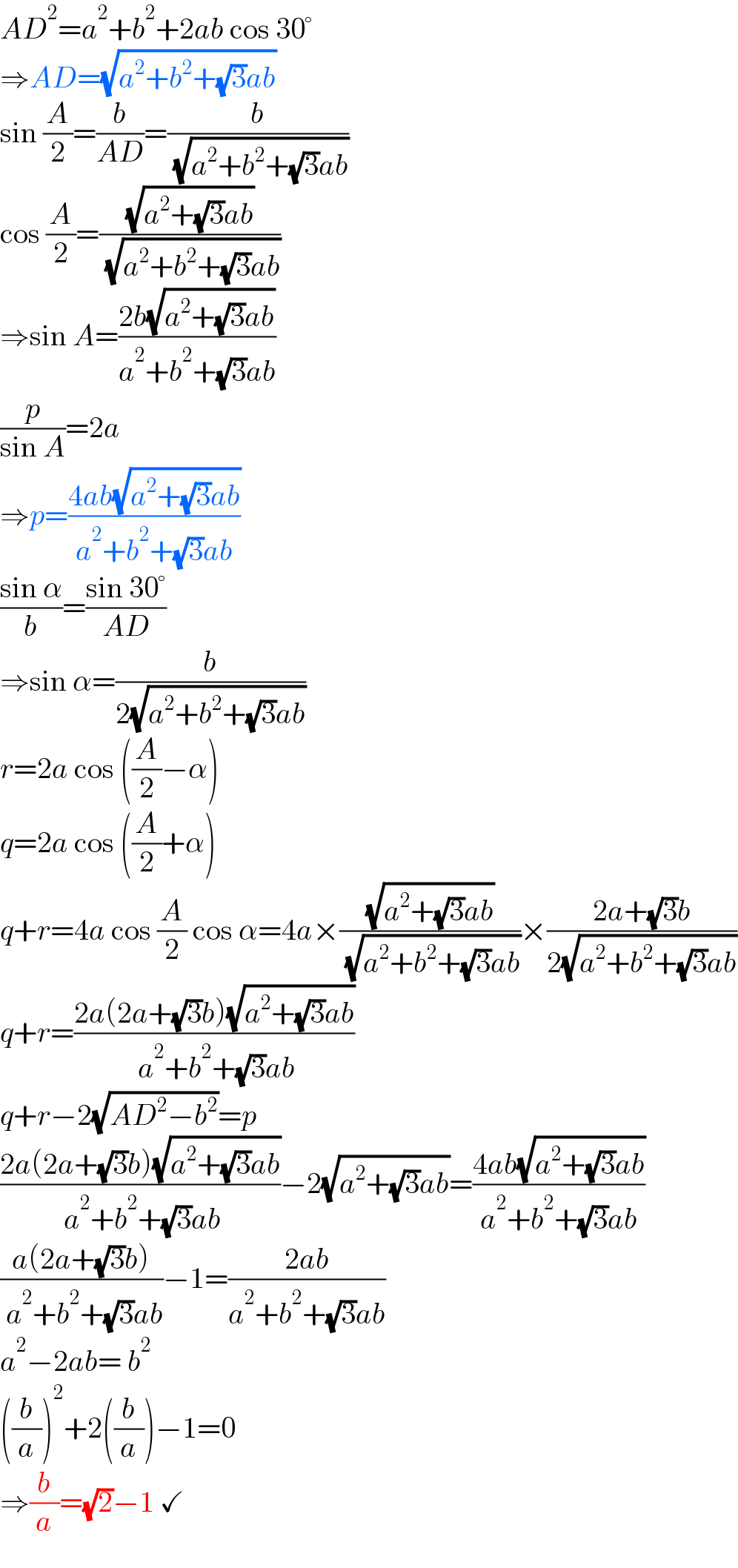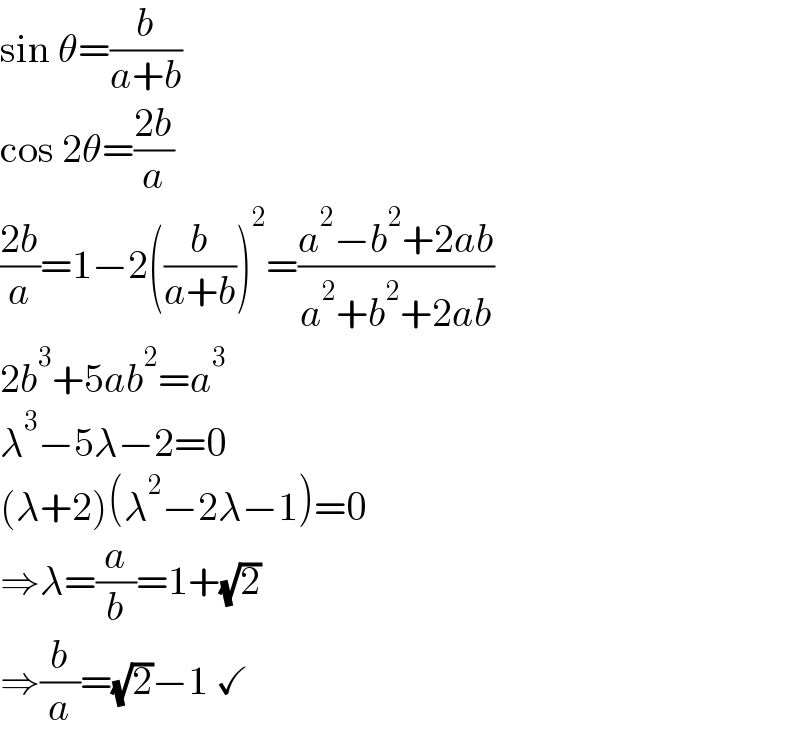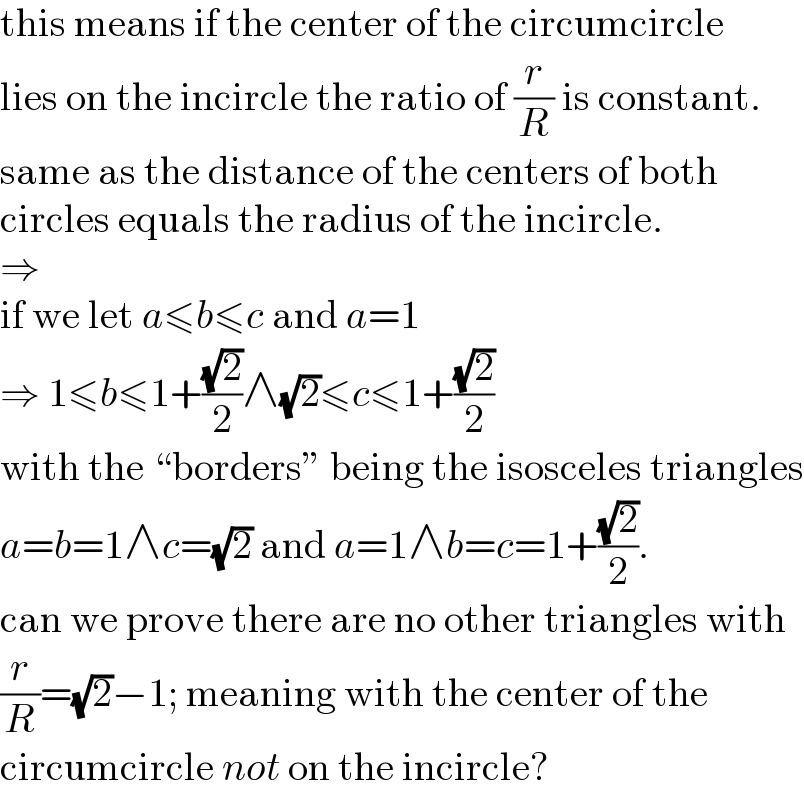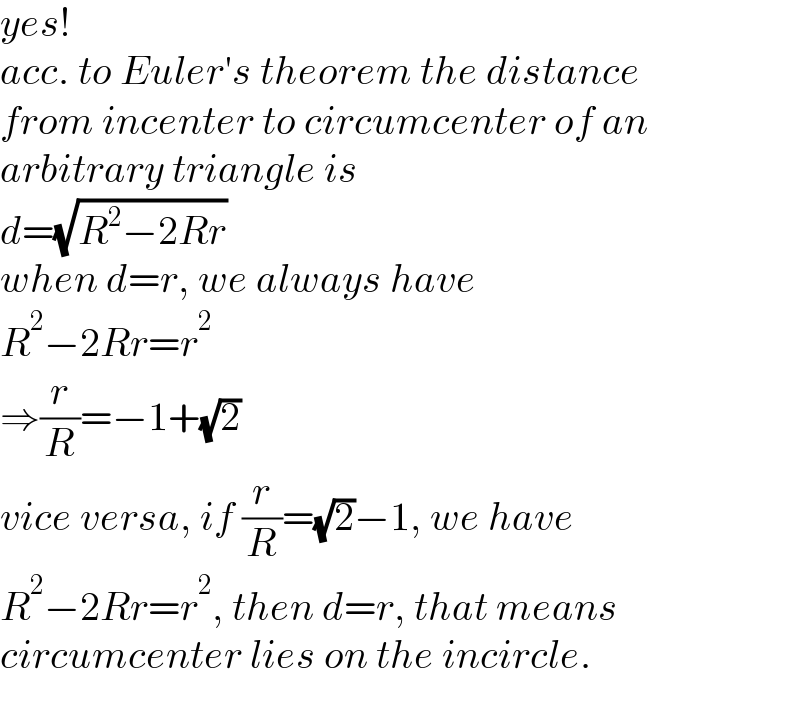
Question and Answers Forum
Question Number 184633 by ajfour last updated on 09/Jan/23

Answered by mr W last updated on 09/Jan/23

Commented by mr W last updated on 09/Jan/23

Commented by mr W last updated on 10/Jan/23

Commented by mr W last updated on 10/Jan/23

Commented by mr W last updated on 10/Jan/23

Commented by MJS_new last updated on 10/Jan/23

Commented by mr W last updated on 10/Jan/23

Commented by mr W last updated on 10/Jan/23

Commented by MJS_new last updated on 10/Jan/23

Commented by mr W last updated on 10/Jan/23

Commented by mr W last updated on 10/Jan/23

